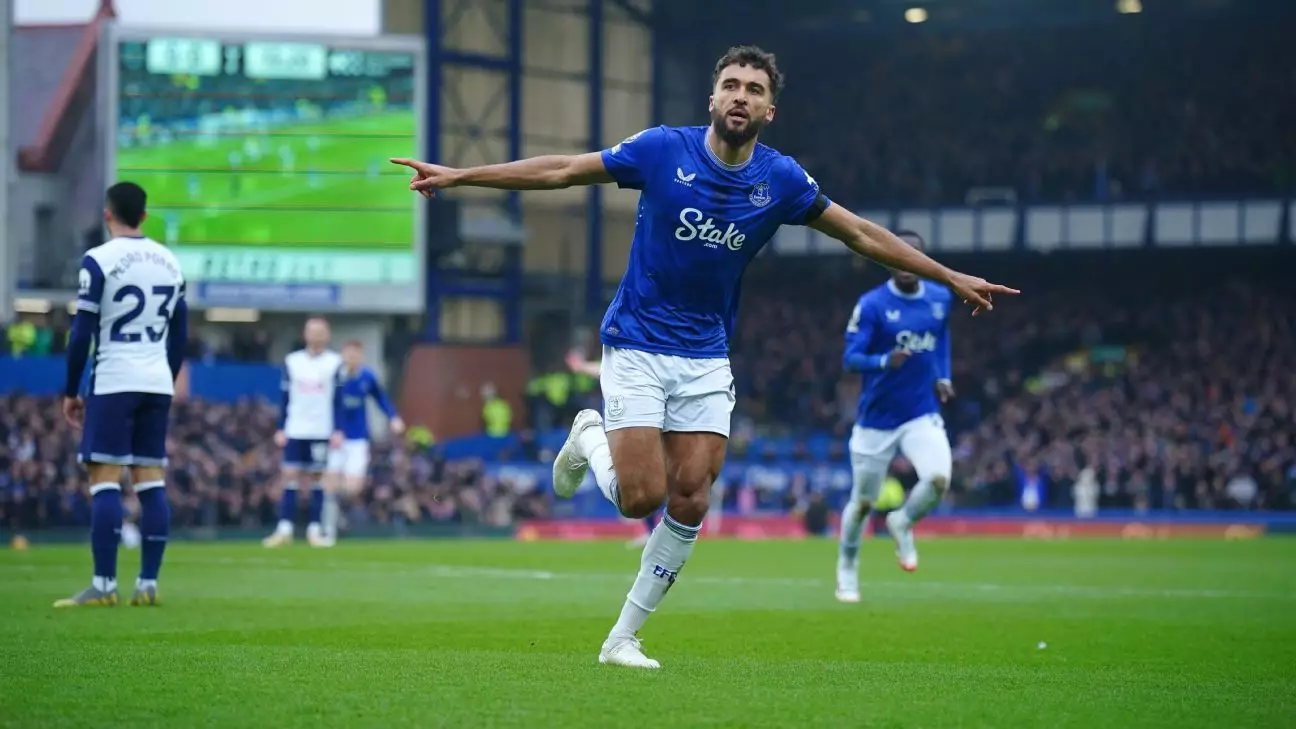In the world of football, transfer windows are more than just a period of player movement; they are the battleground where clubs demonstrate their ambition, strategic planning, and vision for future success. The latest slew of transfer rumors and confirmed deals exemplifies how clubs carefully balance financial prudence with the need to reinforce key areas of their squads. As powerhouses like Manchester United and Arsenal make bold moves, it becomes clear that the art of player acquisition is pivotal in crafting a team capable of conquering domestic and European competitions.
Specifically, Manchester United’s keen interest in Dominic Calvert-Lewin highlights a pragmatic approach toward addressing their striking options. The fact that they are preparing an enticing contract for the former Everton man reflects their unwavering commitment to bolstering their attacking pipeline. Calvert-Lewin, despite suffering persistent injuries, has shown glimpses of his potential, and at 28, he offers a blend of youth and experience. United’s willingness to pursue him on a free transfer underscores a shrewd financial strategy—maximizing talent acquisition without punitive transfer fees. This move could serve as a catalyst for United’s offensive resurgence if Calvert-Lewin can recapture his goal-scoring form and stay fit, especially considering their recent struggles in attack.
Meanwhile, Arsenal demonstrates a different kind of strategic ambition by actively pursuing Viktor Gyökeres from Sporting CP. The Swedish striker’s situation reveals how clubs often leverage player unrest or contractual disputes to their advantage. Gyökeres’s threat to go on strike illustrates his firm desire for a move to the Emirates, a signal that Arsenal might capitalize on to negotiate a favorable purchase price. This scenario underscores the importance of guardrails in transfer negotiations—clubs like Sporting are caught between their financial interests and the player’s ambitions. Arsenal’s readiness to wait and potentially influence Sporting’s valuation exemplifies how patience and tactical pressure can be essential tools for transfer success.
Emerging Trends: Strategic Signings and Market Dynamics
Transfers involving clubs from different continents, such as Flamengo’s pursuit of Mikey Johnston and Besiktas’s move for Jens Cajuste, highlight the evolving landscape of global football markets. Johnston’s impending move to Brazil for a modest fee illustrates how South American giants are increasingly drawn to players from European leagues, especially those with international experience. It also signals a shift in the player’s career trajectory—choosing a different competitive environment that could offer both financial incentives and exposure to a passionate football culture.
Meanwhile, Besiktas’s loan deal for Cajuste from Napoli signifies the continued importance of short-term agreements for squad reinforcement. Turkish clubs, known for their shrewd transfer strategies, often capitalize on loan deals with options to buy, allowing flexibility in squad management. Cajuste’s movement from Italy to Turkey exemplifies this trend, enabling both the player to develop and the club to evaluate his fit within their system without immediately committing to a permanent transfer.
Arsenal’s recent acquisition of Martín Zubimendi from Real Sociedad marks a bold statement of intent. The €60 million release clause triggered by the London-based club signals their determination to build a squad competitive at the highest level. Such high-profile signings demonstrate that top clubs are willing to invest heavily to ensure they do not fall behind rivals. This trend highlights an underlying belief that investing in key areas—whether it’s a creative midfielder like Zubimendi or a clinical striker—is essential to achieving sustained success.
Implications for Club Strategy and Competitive Balance
The current transfer activity reflects a broader narrative—clubs are not merely acquiring players randomly but are executing well-thought-out strategies aimed at long-term success. Manchester United’s pursuit of a proven goalscorer, Arsenal’s tactical leveraging of player unrest, and clubs around the world investing in both young talent and seasoned professionals all point to a highly competitive market driven by a desire to outperform rivals.
What remains undeniable is that smart transfer dealings can transform a team’s fortunes overnight. As clubs jostle for position, the importance of strategic foresight, financial prudence, and understanding the nuances of player motivation becomes paramount. Moving forward, the transfer window will continue to be the arena where fortunes are made and lost, and the clubs that master this art will ultimately shape the future landscape of football.

